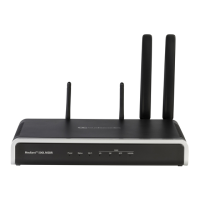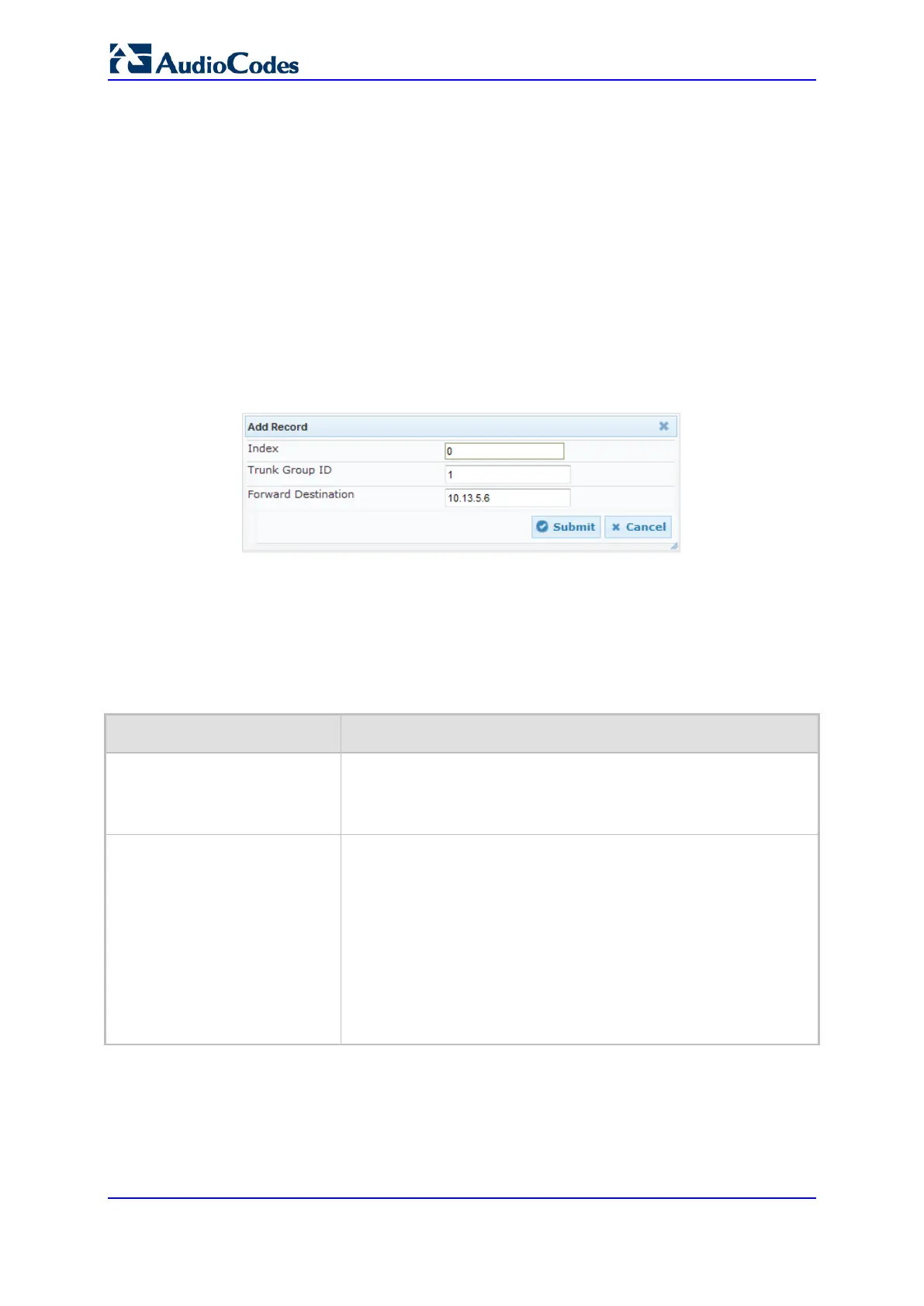User's Manual 426 Document #: LTRT-10466
Mediant 500L MSBR
For digital interfaces: “out-of-service” - all trunks are unavailable/disconnected
"unavailable":
• For digital interfaces: All trunks are busy or unavailable
• For analog interfaces: All FXS / FXO lines pertaining to a Trunk Group are busy
or unavailable
The following procedure describes how to configure Forward on Busy Trunks in the Web
interface. You can also configure this using the table ini file parameter,
ForwardOnBusyTrunkDest or CLI command, configure voip/gw routing fwd-on-bsy-trk-dst.
To configure a Forward on Busy Trunk Destination rule:
1. Open the Forward on Busy Trunk Destination page (Configuration tab > VoIP menu
> GW and IP to IP > Routing > Forward on Busy Trunk).
2. Click Add; the following dialog box appears:
Figure 27-8: Forward on Busy Trunk Destination Page - Add Record
The figure above displays a configuration that forwards IP-to-Tel calls destined for
Trunk Group ID 1 to destination IP address 10.13.5.67 if the conditions mentioned
earlier exist.
3. Configure a rule according to the parameters described in the table below.
4. Click Submit, and then reset the device with a burn-to-flash for your settings to take
effect.
Table 27-8: Forward on Busy Trunk Destination Parameter Descriptions
Parameter Description
Trunk Group ID
CLI: trunk-group-id
[ForwardOnBusyTrunkDest_T
runkGroupId]
Defines the Trunk Group ID to which the IP call is destined to.
Forward Destination
CLI: forward-dst
[ForwardOnBusyTrunkDest_F
orwardDestination]
Defines the alternative IP destination for the call used if the Trunk
Group is busy or unavailable.
The valid value can be an IP address in dotted-
FQDN, or a SIP Request-URI user name and host part (i.e.,
user@host). The following syntax can also be used:
host:port;transport=xxx (i.e., IP address, port and transport type).
Note:
• If you do not specify a port, the device uses UDP port 5060.
• When configured with a user@host, the original destination
number is replaced by the user part.

